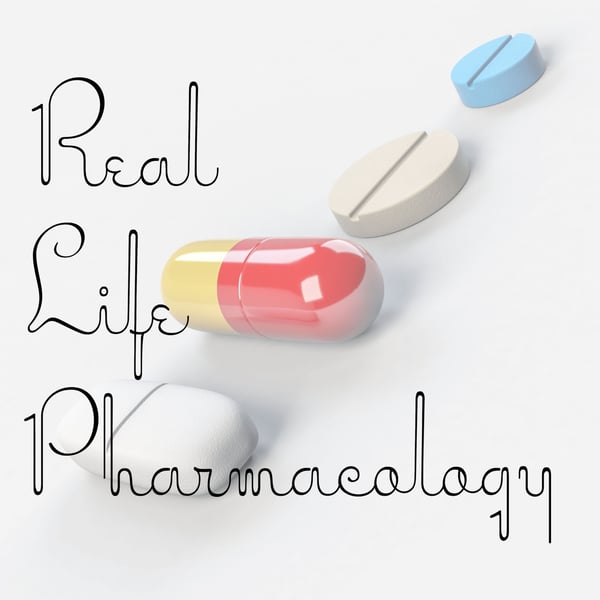Famotidine Pharmacology Podcast
Real Life Pharmacology - Pharmacology Education for Health Care Professionals
Eric Christianson, PharmD; Pharmacology Expert and Clinical Pharmacist
5 • 716 Ratings
🗓️ 13 October 2022
⏱️ 15 minutes
🧾️ Download transcript
Summary
Famotidine is generally pretty well tolerated, but one thing I look out for with chronic use is B12 deficiency.
Famotidine is eliminated by the kidney so you should pay attention to the dose in patients with CKD.
Famotidine is occasionally used as a pretreatment to help prevent infusion-type reactions for certain chemotherapy agents.
Transcript
Click on a timestamp to play from that location
| 0:00.0 | Hey all, welcome back to the Real Life Pharmacology podcast. I'm your host pharmacist, Eric Christensen. |
| 0:05.6 | Thank you so much for listening today. As always, go check out Real Life Pharmacology.com. |
| 0:10.6 | We've got a great PDF. It's 31 pages. It's on the top 200 drugs. It's a no-brainer. |
| 0:16.6 | If you're going through pharmacology classes, board exams, or if you just want a little |
| 0:21.0 | refresher on the top 200 drugs and make sure you're up to speed out in clinical practice. |
| 0:27.7 | So go get that for free. |
| 0:30.1 | Real Life Pharmacology.com. |
| 0:33.2 | All right. |
| 0:33.9 | The drug of the day today is Fomodidine. |
| 0:37.3 | Brand name of this medication is Pepsid. |
| 0:40.6 | This is what's called an H2 blocker. |
| 0:43.9 | Essentially, from a mechanism of action standpoint, |
| 0:46.8 | this drug blocks the action of histamine in stomach parietal cells. |
| 0:55.1 | So basically, physiologically, what happens is histamine binds H2 receptors in parietal cells |
| 1:02.5 | in the stomach. |
| 1:04.2 | And these cells, parietal cells, are responsible for secreting gastric acid. So when histamine binds these H2 receptors, |
| 1:14.3 | it stimulates the release of gastric acid, which lowers the pH. When we use Fomodidine, |
| 1:23.5 | it blocks those receptors so histamine can't bind. |
| 1:28.4 | Therefore, we have less acid secretion, |
| 1:31.3 | and it's going to help with symptoms of things like heartburn and gurd. |
| 1:35.6 | And that indeed is the primary use. |
| 1:38.5 | In my practice, that's probably 90 to 95% of the time. If I see Fomodidine, that's what it's being used for. |
... |
Please login to see the full transcript.
Disclaimer: The podcast and artwork embedded on this page are from Eric Christianson, PharmD; Pharmacology Expert and Clinical Pharmacist, and are the property of its owner and not affiliated with or endorsed by Tapesearch.
Generated transcripts are the property of Eric Christianson, PharmD; Pharmacology Expert and Clinical Pharmacist and are distributed freely under the Fair Use doctrine. Transcripts generated by Tapesearch are not guaranteed to be accurate.
Copyright © Tapesearch 2025.

